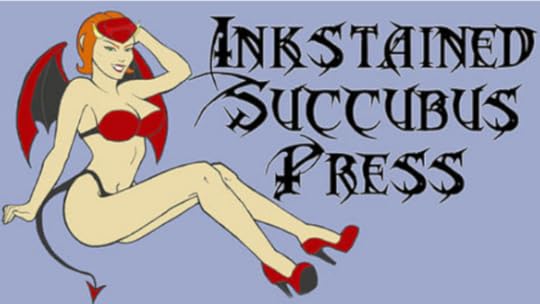B.R. Sanders's Blog, page 21
August 28, 2015
Guest Post over at Blog Z!
The lovely people over at Blog Z published a piece of mine today! Well, it’s not really a piece, so much as it is fan fiction. Literal fan fiction I wrote inspired by fellow Zharmae author Brian C. Baer’s Bad Publicity, which I read and loved…and then wrote fan fiction about and then posted on our publisher’s blog like a goddamned grown adult.
Go have a gander if you’re so inclined.
-B


Book Review: THE MARK OF NOBA
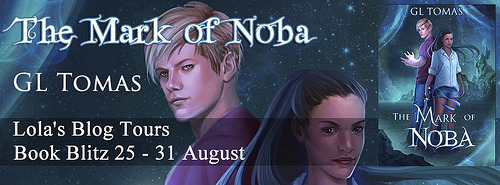
This is my stop during the book blitz for The Mark of Noba by GL Tomas. This book blitz is organized by Lola’s Blog Tours. The book blitz runs from 25 till 31 August, you can view the complete blitz schedule on the website of Lola’s Blog Tours. My review is posted below the blurb, author info, and giveaway info!
The Mark of Noba (The Sterling Wayfairer Series #1)
by GL Tomas
Genre: Fantasy
Age category: Young Adult
Release Date: 25 August, 2015
Blurb:
Sterling Wayfairer has one goal for his senior year: make his mark. He’s been slipping into the background his whole high school career—distracted by his mother’s mental health, unsettled by the vivid dreams that haunt him at night, and overshadowed by the athletic accomplishments of his popular best friends. But this year is going to be different. He’s going to break a few rules, have some fun, and maybe even work up the nerve to ask his crush out on a date.
But things don’t go exactly as planned. Students are disappearing, Sterling starts losing time, and it all seems to center around Tetra, a girl no one else seems to notice but him. When he finally tracks her down for answers, they aren’t what he expects: He and Tetra hail from a world called Noba, and they’re being hunted by a Naga, a malevolent shapeshifter that’s marked them for destruction.
Tetra and Sterling have distinct abilities that can help them fight back, but their power depends heavily on the strength of their bond, a connection that transcends friendship, transcends romance. Years apart have left their bond weak. Jumpstarting it will require Sterling to open his heart and his mind and put his full trust in the mysterious Tetra.
If he doesn’t, neither of them will survive.
You can find The Mark of Noba on Goodreads
You can buy The Mark of Noba here:
– Amazon
– Amazon Paperback
 About the Author:
About the Author:
Guinevere and Libertad go by many superhero aliases. Whether you know them by G.L. Tomas, the Twinjas, or the Rebellious Valkyries, their mission is always the same: spreading awareness of diversity in books. Oh, and trying to figure out the use for pocketless pants! They host other allies and champions of diversity in their secret lair in Connecticut.
You can find and contact with GL Tomas here:
– Website
– Facebook Author
– Facebook book blog
– Twitter account Libertad
– Twitter account Guinevere
– Twitter account YA book blog
– Twitter account NA, romance and adult books
– Goodreads
– Author Pinterest
– Pinterest Book Blog
– Book Blog Tumblr
There is a tour wide giveaway for the book blitz of The Mark of Noba. These are the prizes you can win:
– $10 Amazon Gift Card(US) or A book of your choice via The Book Depository up to $10(INT)
For a chance to win, enter the rafflecopter below:
a Rafflecopter giveaway
//widget-prime.rafflecopter.com/launch.js
B’s Review
FTC disclosure: I received a free digital copy of this book in exchange for an honest and unbiased review.
Notes on Diversity
Given that the authors of The Mark of Noba are so deeply involved in the #WeNeedDiverseBooks movement, I set my expectations high in terms of diversity. I am happy to say they delivered!
The book starts with Sterling Wayfairer, who is a blond, blue-eyed cishet straight dude, but he is basically the only one of his kind in the book. And unlike in The Windup Girl, where this viewpoint dominates the narrative and makes the diversity surrounding the central White dude ornamental, Sterling Wayfairer is not put in a position of power or privilege in his world due to his Whiteness/cis-ness/het-ness. Virtually all of his friends are teens of color, and their presence is not especially noteworthy. Like with Niko, G L Tomas pushes back against White supremacy by creating a world where people of color are thoughtlessly acceptable, desirable, perfect just as they are. Racial tensions where Sterling lives seem not to exists, and this in itself is a strong pro-diversity statement 1.
AND THEN WE GET TETRA. Tetra is Black, like very dark Black, and she’s beautiful and strong and smart and flawed (so flawed) but so redeemable. AND she is offhandedly queer, which made my heart flutter. (You can already tell I have a massive thing for Tetra, huh?). Tetra is a great character, and she is an especially great Black woman character. That she is so dark-skinned and consistently seen as desirable is another example of G L Thomas going the extra distance here in terms of visibility and diversity in their work.
But wait! There’s more! With Sterling’s mother we get a character grappling with mental disability, and with Sterling himself we see how that affects the people she loves. Laurel, Sterling’s mother, was written with such nuance. As both the child of a parent with severe mental health issues and as a parent who struggles with mental health themself, the delicate and fraught relationship between Sterling and Laurel really got to me. That kind of relationship is very easy to write badly in fiction, and I’ve seen it written badly more than I’ve seen it written well–but G L Tomas got it right. They captured the layers of dependence and complication that the mental illness of a parent causes–the way it turns a child into a caretaker, and the way that muddies the relationship between the child and the parent.
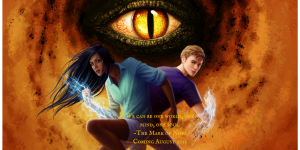 Review
Review
Sterling Wayfairer is just trying to make the most of his senior year, but all he actually seems to do is get in trouble. And then things start to get weird: there’s a girl at school in all his classes that only he seems to remember. He starts losing time. And then this girl, Tetra, moves into his house, convincing his parents that she’s a ‘foreign exchange student.’ She says they know each other. She says they are bonded. She says their from some other world? And things get even weirder after that.
From Tetra’s perspective, she’s stumbled into a foreign world to get her bonded Traveler up to speed, but he remembers nothing. Literally nothing. And there’s a monster loose, trying to find them to eat their souls. She has to protect this entire world, get Sterling up to speed, and protect him from the monster literally all by herself. While blending into at a local high school.
The book bounces back and forth between Sterling and Tetra’s perspectives, giving us insight between how each of them is dealing with this enormously complicated situation. What’s lovely about the back and forth is that both Sterling and Tetra have clearly defined and very, very different voices. Sterling is so young, and untempered, and so casual. Tetra, by comparison, is much more formal, and more wary, and starts of more focused on the task at hand. But, over the course of the book, she loosens up and relaxes into Sterling’s space, his circle of friends, his family. Both of these characters grow a lot of the course of the book–Sterling matures, and Tetra seems to get younger and looser and warmer. I think we don’t see Tetra’s sort of reverse-arc enough, especially in YA books. It’s especially meaningful to me because I feel like I’ve gone on a similar emotional journey as Tetra.
All the hallmarks of a YA high school book are here–midterms, prom prep, party hookup–but with the threat of a sci fi monster in the background. If there’s one thing I would have changed about the book, it would have been a better balance between the high school foregrounding and the monster quest background arc. The hunt for the mysterious Naga hunting Sterling and Tetra slips in and out of the foreground to the extent that by the time the requisite showdown happens the stakes don’t quite feel high enough. It’s foreshadowed well at the beginning, but there’s a lull in the middle of the book where the Naga seems to go into hibernation while Sterling and Tetra hang out and do high school things (which is great fun and excellent for their character development). Still, a better balance between both sides of the plot would have added tension all the way through the book and added even more emotional punch to an already gut-wrenching ending. Whoo boy, that ending is killer.
Even with the uneveness in the pacing and tension, this book is well worth the read. I am excited to see what Tomas does with the second book. The characterization is so strong, and the writing is lovely. The teaser chapter for the second book had me so intrigued!
Also, and this is a small but important point, the book design is beautiful. Just lovely to behold, from the cover to the chapter headings.
1For examples along other axes of this, see Malinda Lo’s statements of writing fantasy worlds without homophobia.


August 26, 2015
Writing Tip: Figure Out Your Comfort Zone And Go From There
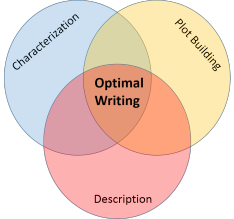
Three domains for awesome reading: good characters, good plot, good prose.
I would contend that truly stellar writing excels in three domains: it has excellent characterization, the plot keeps you coming back for more, and the prose itself is to die for.1
I would also contend that generally writers tend to have a comfort zone–one of these three domains is easier to write and comes more naturally than the others.
When I was just starting to write, I got really hung up on trying to nail all three domains right out of the gate every single time. Because that’s what it took, right?
Well, yes and no. Yes, that what it takes for a finished piece of writing to succeed. But that will pretty much make it impossible for me, personally, to get through a first draft of anything. So, in order to have something to polish, something to finish in the first place, I had to stop overthinking it. I had to get that first draft done, get it out, on paper, all the way through.
The way I see it, you’re not going to get to what I call “optimal writing,” or that primo grade-A book-hangover read-until-way-past-your-bedtime stuff until the polished final draft anyway. By then, you already know what kind of book you’re writing. See how in that graphic up there the optimal writing is buried deep in the center? That’s because it’s hard to get to. You have to chart a path.
My advice is this: in the first draft, play to you strengths and write fast by starting in your comfort zone. In the second draft, when you have a better idea of what you’re actually doing with the piece, fill in the gaps with the thing you’re second best at. Save the hardest for last. That’s the the part you wait until the endgame for. That’s the polish. You do that third, very hard thing while you’ve really nailed down the other two. By then you know the book like the back of your hand. You’ve got the rhythm down, the themes laid out. You know what you’re doing with it. Your writing isn’t exploratory anymore, so with this last piece it’s more targeted revisions.
An Example: How I Wrote Ariah
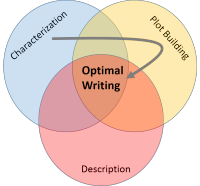
The B R Sanders: Start with characters, take a sharp right at plots, just barely squeak into good writing. BAM! That’s how I wrote ARIAH.
I’m a very character-driven writer. Virtually all my narratives start first with an idea of a character, then with a complication in the form of a relationship. The cast forms, radiating out from one or two key characters who I understand in minute, intricate detail. I often don’t even have notes about these central characters. I just know them. Ariah, Sorcha, Shayat–I never had to write anything down, or plan anything out, or keep anything straight. I just, weirdly, knew them.
But all the other characters in Ariah had dossiers as I started drafting the book, because they were fuzzier and needed filling in. They were less organically alive, less vibrant (which is maybe why it wasn’t their story) so I made those notes.
I didn’t really get the plot of Ariah right until the second draft. I didn’t really know what the book was about until then, but I sure as hell knew who was in it. I wrote it, let it sit for a while, and re-read it. I made notes to myself on the re-read about plot stuff. Again, it happened naturally–I think of the three domains plot building is my second best. And I outlined a better, stronger plot for the book, which I followed almost to the letter in the revisions.
And then there was description. Not my strong suit. I…punted. I do not consider myself a stylist. I would say I have a sturdy, workable prose style. I tend to read my own writing for grammar and comprehension. I do not fiddle with my sentence. That way, for me, lies madness. They will never be perfect enough. So, I made sure the draft was coherent (in that the action seemed descriptive enough, and the dialogue was easy to follow, as it had tags that told you who was speaking–things that my first draft lacked in places), and subbed the book. My truly excellent editor was wonderful at pointing out which places needed more description and which needed a little less. Where my writing hit the Optimal Writing Zone instead of lingering in the murky green good characterization/satisfying plot wilderness, she probably had a hand in.
Ok, So What Does This Mean For You?

The Raymond Chandler: You start with the plot (a wicked detailed outline, mayhaps?), then branch out into characters. Polish up that prose, then head straight to the promised land.
But lo! That is just one way to get to the Optimal Writing Promised Land. Your route might be different. The technique–start where it’s easy, and push through to where it’s hardest–might be the same, but your starting point and ending point are likely different than mine. I’ve come up with a couple of alternatives in the graphics here, but really, the possibilities are endless.
The beauty of writing–of any art–is that there’s no one way to do it. There’s as many ways to get the art done as there are artists. But getting started is always hard. Writing a book is a daunting process. Breaking it down into those general steps–First Draft, Second Draft, Polish–makes it more manageable for me. And assigning a general skill to each one to focus on and get right in the draft–Characters, Plot, Description–helps make it even more manageable.

The Anne Rice: You write very long descriptions of furniture before venturing into Prairie of Plot. You edge into Optimal Writing picking up characterization almost by accident.
It’s made me a better writer in the long run. I trust my characterization more with each first draft I crank out. I know, with certainty, that’s my great strength as a writer. I know I’m getting better at plotting: it’s easier to manage every time I do it. And I’m growing as a stylist, too. I’m getting a knack for knowing what to include and what not to include. I am sometimes impressed by my turns of phrase when I read my own first drafts. The reason I’m improving is because this system helps me write more–get to the finish line and cross it. It exercises all three skills, which means everything gets a little better every time.
~
1Your mileage may vary as to what each of these actually consists of, but good writing generally has all three present for it to work.
Want posts like this delivered to your inbox? Sign up for my newsletter!
August 25, 2015
Interview: SIMONE SALMON
I’m excited to have Simone Salmon stop by my blog today and answer a few questions about her novel, Drafnel!
![CropperCapture[108]](https://i.gr-assets.com/images/S/compressed.photo.goodreads.com/hostedimages/1440566094i/15993521.png) Simone Salmon, a Jamaican born New Yorker, is the mother of two sons and a Jack Russell terrier.
Simone Salmon, a Jamaican born New Yorker, is the mother of two sons and a Jack Russell terrier.
Simone is still working on her exit strategy from Corporate America, but in the meantime she writes novels, poetry and expands her multisensory perceptions. She is also a spiritual truth seeker who appreciates psychic phenomena and timelessness.
Music of all kinds, warm weather, lounging on the beach, and experiencing the unknown are just a few of her most favorite things.
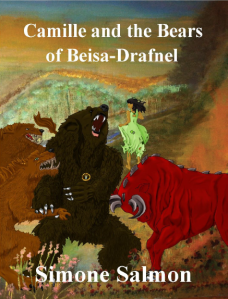
Pre-order the book at: Amazon | BookGoodies | Goodreads
DRAFNEL launches 8/28/2015!
There are so many moving pieces in DRAFNEL, and it’s all the more complicated by the fact that, as presented, the book is non-linear. How did you keep everything straight? What was your writing process like?
This is a fantastic question and I hope that my answer explains why. I have always wanted to write a book or poetry or short story…just about anything. After receiving a C- from my freshman English professor, I decided that maybe the writing dream needed to be shelved in pursuit of a more realistic profession: something having to do with computers. Fast forward 20+ years later, with a limited career in word processing, the writing itch started to take over again. I found a great online writing coach, the late Debra Rigas. She understood my aversion to using an outline, after my many misses with a slew of “How to Write a Novel” books. She encouraged me to not worry about where paragraphs or even chapters would end up. For instance, the last chapter that I wrote is the beginning of the first chapter in Drafnel. To be honest, many chapters and paragraphs were moved around as the story unfolded. As a matter of fact, my original intention was to write a ghost story based on very real events that occurred while living in a New York brownstone after graduating from college. However, something different unfolded the more I connected with my characters and glimpsed their worlds. The only real process I can admit to having is a commitment to non-stop writing during three one-week vacations at the Jersey Shore. The majority of the book got written by the beach over a three-year period during each of those vacations.
My best answer for your first question is that I followed Debra’s very astute suggestion and just wrote. This novel is a literal creative purge. There was no methodology for keeping everything in logical sequence. I did not have lists or journals, nor were there any character mappings. Some of the characters chose to remain undeveloped because they will appear in subsequent books in the series. I followed their energetic flow, otherwise the narratives sounded forced and felt mechanical. I found myself filled with genuine delight or surprise upon discovering why a certain event happened or even the name of a particular character. I knew nothing of implementing plots or plot twists, but that didn’t seem to matter because, as you hinted, a variety of intricate and complex moving pieces somehow weaved their way into the story.
A writer writes. So I just wrote.
I was captivated by the sections narrated by Camille’s grandmother, Catherine, which were set in Jamaica. Catherine’s character–both as a young girl and as an old woman–came through so strongly. Can you talk a little about her and how she came to be included in the book?
Catherine’s character is based on my maternal grandmother, Mavis, who passed away several years back. My grandmother, like Catherine, was adopted from India and knew very little of her own family history. The people who raised her, in Jamaica, treated her like a housemaid instead of an adopted child or sister. She shared many tragic stories of mistreatment and loss. An example is when her two year-old son was permanently removed from her care. She never knew where his father had taken him or how to locate the family. She searched for him throughout the years and did not connect with him again until a little before her death. So there are many similarities between Catherine, the character, and my grandmother.
I spent countless hours on the phone or lounging in my grandmother’s living-room couch, during occasional visits, captivated by her answers to my questions about her life. She had the best sense of humor and always made me laugh. She helped me to write this book in many different ways: through her gift for story-telling and the presence of her magnificent spirit.
Another standout for me was Kristle Franz. I won’t get into spoilers here–folks really should read the book–but that was a narrative thread that slowly built momentum and weirdness throughout. What were some influences for you? How did that character come to be?
It’s so interesting and satisfying to hear how a character affects the reader. As I wrote the story, Kristle seemed to prefer staying in the background. I guess that’s why her narrative has that slow, yet deliberate momentum you mentioned. She is loosely based on the stepmother of an acquaintance. This acquaintance happens to be the product of an extra-marital affair. She ended up being raised by her father’s wife who, understandably, resented being burdened with the daily reminder of her husband’s betrayal. Unfortunately, the child bore the brunt of this man’s deception, both in her lack of acceptance within the family and the rejection by her own mother. Kristle’s character is composite of perceptions from an outsider witnessing some of the weirdness in those relationship dynamics.
What are you working on right now? What should readers look for from you next?
I am currently working on the next book in the series entitled, Caleb. This will be based on Catherine’s brother, who we learn little about in Drafnel. Like this book, I really won’t know much more until the story unfolds.
I’ve also been working on a non-fiction book about my experiences trusting intuition and following higher guidance. I’m hoping to get both books completed over the next twelve months.
How can readers stay in the loop and get news about your projects and releases?
Folks can look for upcoming events such as giveaways and book signings on my website: www.ssalmonauthor.com.
On social media I can be found at:
Twitter: @MiracleMindCoac
Facebook: Author Page – Simone Salmon
Blog: Origisims
Instagram: Think2brich
Pinterest: Simone Salmon
Anything else you want us to know? Shout-outs? Words of wisdom?
Don’t wait for the right time or inspiration. If you want to write a novel or do something outside of your comfort zone – just do it and be ready to experience the miracle of co-creating with the universe. Listen to your intuition and follow your gut. That guidance will open up new doors and change your reality in ways that you cannot begin to comprehend or conceive.
Shout-out to:
BR Sanders for this interview and awesome review;
Solstice Publishing for taking a chance on my book;
Solstice editor, Laura Johnson, whose editing was everythang;
Cat Castleman who brought the characters to life on the book cover;
My sons, James and Jordan, for being constant inspirations and motivation;
My angels, both here and beyond, for all of their assistance and guidance during this process.
Want posts like this delivered to your inbox? Sign up for my newsletter!


August 24, 2015
Roundup: August 17-23, 2015

click through for image source
Wanderings on the Internet
Ariah got some reviews over at Tor.com! Very exciting: a write-up by the most excellent Foz Meadows and a mention in the fantastic Liz Bourke’s Sleeps With Monsters column.
Twitter chat time! SO happy that I jumped into the #DiverseSFF chat that happened last Friday. The chat focused on decolonizing science fiction and fantasy. Check out the storify recap for some excellent conversation and book recs!
Also! I wrote guest posts for Wordwraith Books and Inkstained Succubus — both of which focused on issues of diversity in Fantasy (you may be noticing a trend here).
Some new Supernatural Haikus even got posted over on Tumblr.
Writing Update
Not a ton to report here, this week: did more editing than writing. Some was for my own writing, most was for a project I’m doing developmental edits on. Stay tuned, as I’ll be hopping on the writing wagon next week!
Want posts like this delivered to your inbox? Sign up for my newsletter!


August 21, 2015
Book Review: THE WINDUP GIRL
Notes on Diversity:
On the surface, this book looks diverse. It’s set in Thailand, and at least two of the viewpoint characters (Lieutenant Kanya and Emiko) are not only people of color but also women. Lieutenant Kanya is also queer. I read this book because it was a high-profile well-respected award-winning diverse science fiction book. At least, this is what it purports to be.
This is actually a case of diversity-gone-wrong. Anderson Lake, a White cis-het man, is the dominant POV and the most developed character. Thailand is largely seen through his eyes, and the rest of the cast exists to add color and spice to his story. This is a case where, in spite of the fact that Anderson Lake is one of the few White characters in the story, basically all of the people of color suffer from tokenism. They are painted in broad strokes, and those broad strokes are guided, unfortunately, by stereotypes.
The Windup Girl is one long diversity fail.
Review:
The environment is in shambles. Espionage in the 23rd century, at least as embodied by Anderson Lake, takes the form of swiping the location of a Thai seedbank. Along the way, we are introduced to Emiko, the titular Windup Girl, a Japanese New Person sex slave, and Lieutenant Kanya, a policewoman embroiled in some very complicated politics.
It is a setup that makes for an interesting book. And Paolo Bacigalupi is a good writer. But the book fails, and it fails because there is actually very little that is new here. The spec fic stuff in it is just bells and whistles, but the ideas are actually just rehashes of Orientalist male fantasies that have been around for centuries.
This is not a book about biotechnology or Thailand. This is just another book about how an East Asian woman (Emiko) seems so foreign to a White man that she appears soulless, but that she hold immense and disruptive sexual appeal to him anyway. And, of course, she is bred to be submissive and obedient. Name a trope related to the fetishization about Asian women and it’s here, but it’s played completely straight.
Honestly, the only reason I gave this book two stars instead of one was Lieutenant Kanya. She appeared on the page as a queer woman of color with at least some interiority, and she was a reprieve from the unrelenting Orientalist assault that was the Anderson Lake-Emiko storyline. Like Emiko, Kanya is not free of stereotypes: she is a butch lesbian who is humorless and who ultimately ends up alone1. But, hell, at least Kanya got some interesting things do to plot-wise. At least she wasn’t, quite literally, a lab-grown sex-slave for a White man to ogle who played into harmful stereotypes rather than dismantling them.
It was strange reading this book, because it was so well-received. There are times when you read a book and it’s truly like the rest of the world is reading an altogether different book. Yes, Bacigalupi can construct a nice sentence. Yes, thinking about a world populated with dirigables and armed genetically enhanced elephants is pretty cool. But the titular character2 is a damsel in distress in the worst possible way; Emiko’s storylines start antiquated and continue to be so throughout the book. Bacigalupi has nothing fresh or new to say about her. This book is far from feminist or intersectional.
I expect more from fiction. As a reader on the margins, I demand more from fiction, especially well-regarded fiction. Well-regarded fiction should treat its vulnerable, exploited, marginalized characters with at least a modicum of respect. They should be granted a shred of agency.
1Because Lesbians Can Never Be Happy
2That the title is the slur used against the New People really sets the tone for Emiko’s storyline in hindsight.
Want posts like this delivered to your inbox? Sign up for my newsletter!


Writing ARIAH: A Closer Look at the Titular Character
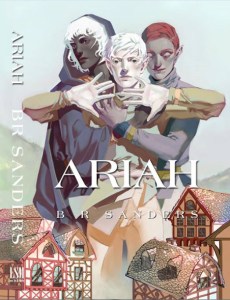
Ariah is the pasty one in the center, FYI
Amazon | Goodreads
Given that Ariah hit some new folks radars thanks to spotlights thrown by the wonderful and talented Foz Meadows and Liz Bourke, I thought it might be talented to post some writerly behind-the-scenes type things here on how the book came to be. I haven’t really done that since before its launch, anyway, though if you’re interested, you can find all of those posts here.
Ariah Lirat’Mochai is a funny story. The book wasn’t supposed to be about him. It was supposed to be about his mentor, Dirva. Ariah was supposed to be the reader’s lens into Dirva, the way Nick Carraway narrates The Great Gatsby though the book isn’t actually his story. I maintain that Dirva is an interesting character in and of himself, but Ariah quickly took over the narrative. No passive viewpoint character here, no, Ariah demanded to tell his own story while Dirva’s maudlin arc played out in the shadows, seen sometimes and hidden at other times. I went with it. What else can you do but surrender to a first draft?
I have always loved Ariah’s voice. It came fully formed, of its own accord. He overthinks, he questions and second guesses, he is uncertain, but at his core, Ariah is a man who has a moral center. Not, particularly, a sense of self, but a firm moral center. And this makes him very interesting to write, because for him:
The truth was a slippery thing that, perhaps, did indeed slide between categories.
He spends a lot of time and energy trying to parse what he should say and what he should not, and when, and why. Some of this is to do with his magic–being an shaper, which is somewhat like an empath–he essentially eavesdrops on other people’s emotional states. They may be trying to cover, putting on a game face, that he sees right through without realizing he’s even seeing through it. So, because he’s so accidentally observant, he’s very careful. Ariah tries to weigh everything before he speaks. He doesn’t always get it right, but he tries to, which means there are so many thoughts running through his mind at any given moment as he tries to process everything at once.
On top of this is the complication of his empathic magic, and the way it interacts with his shifting sense of self. Early in the book, it becomes clear that he needs some sense of stability to keep himself together:
Ambivalence tends to drive me to self-sabotage. I do not do well with internal conflict; I do not do well when I am unmoored.
But it also becomes clear that for Ariah, paradoxically, coming to terms with a shifting sense of self provides the greatest sense of stability:
It’s like you’ve got two hearts inside you: yours and theirs. To learn a litany, you have to learn to be yourself and not yourself at the same time.
It’s only by understanding the way he is deeply shaped by the people he is around and loves that he can keep that dangerous ambivalence at bay. The only way Ariah can find to silence that awful internal conflict is, shockingly, but accepting that there is no single ineffable Ariah–there is the Ariah that brought to the surface by Sorcha, and the Ariah that is brought to the surface by Shayat and the Ariah that is brought to the surface by Halaavi, and none is more real or true than the other.
Ariah, like all the characters I’ve written, is deeply similar to me and deeply dissimilar to me. He is like me in that I tend to get immediately and terribly overwhelmed by the information I receive from others. I pay far too much attention by accident to people’s postures, their tone of voice, their word choice, their clothing, everything, and then I have to process it, and it’s exhausting, so very exhausting. He’s unlike me in that he strives for harmony and politeness. I don’t. But this idea of reconciliation between all these different versions of oneself, this idea that all the different sides and presentations of oneself are harmonious, are in sync, are a network of related ‘yous’ all made possible by the strength and depth of your relationships with other people, that is a thought I don’t think I would have had without writing this book. I wouldn’t have made that insight, which I find profoundly uplifting, without having stumbled upon Ariah’s voice and letting him take the story’s direction. I’m glad I did.
Want posts like this delivered to your inbox? Sign up for my newsletter!


August 20, 2015
Guest Post over at Wordwraith Books!
Hi friends!
The lovely folks over at Wordwraith Books published a guest post of mine titled “Side Stepping the Triangle: Why I Write Non-Monogamous Characters” today
Sound like your cup of tea? Hop on over and take a gander!
-B


Guest PostS over at Wordwraith Books!
Hi friends!
The lovely folks over at Wordwraith Books published a guest post of mine titled “Side Stepping the Triangle: Why I Write Non-Monogamous Characters” today
Sound like your cup of tea? Hop on over and take a gander!
-B


August 19, 2015
Guest Post over at Inkblots from the Inkstained Succubus!
Hi friends!
The fine folks at Inkstained Succubus, who published both my novel Resistance and my novelette Matters of Scale, have published an essay of mine crowing about why Diversity in Secondary World Fantasy is important and some of the ways in which I’ve sought to make that happen in my own works. Stop by and check it out if you’re interested!
-B



![CropperCapture[114]](https://i.gr-assets.com/images/S/compressed.photo.goodreads.com/hostedimages/1440841964i/16032380.png)
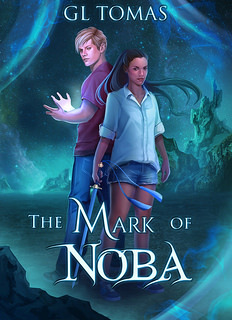




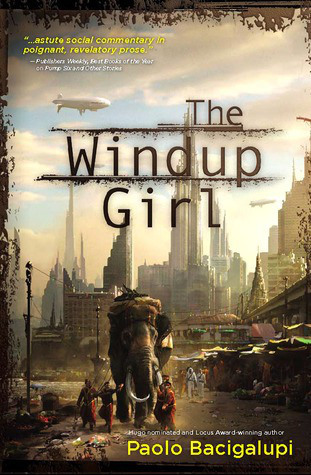

![CropperCapture[111]](https://i.gr-assets.com/images/S/compressed.photo.goodreads.com/hostedimages/1440148138i/15937228._SX540_.png)
